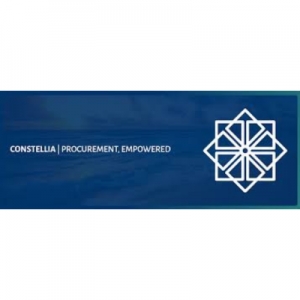Malikshaw Interim
Our Frameworks
We're proud to be approved suppliers on these leading frameworks, enabling us to deliver our services efficiently and compliantly to a wide range of clients.
PSR
A government framework that provides public sector customers with a range of routes and services to engage talent that includes Contingent Hiring and Recruit, Train, Deploy.
Constellia
A diverse and dynamic market of pre-approved suppliers accessible to both the public and private sector
What does your CV say about you?

What Makes a Great Interim CV (And What to Leave Out)
As an interim, your CV isn't just a record of employment. It's your personal pitch deck. It needs to land quickly, speak clearly, and show exactly how you create value.
In a market shaped by AI screening, shortlisting software, and overloaded decision-makers, even seasoned professionals can get overlooked for the wrong reasons. So how do you stand out?
Start With Outcomes, Not Job Descriptions
Hiring managers don’t want a list of tasks. They want to know what changed because you were there.
Whether it’s a digital transformation, service redesign, operating model shift, cost reduction, or cultural change, show the outcomes. What was the challenge, what did you do, and what happened as a result?
Use numbers where you can. They build trust fast.
✅ “Delivered £2.3M in savings through procurement review and supplier renegotiation”
✅“Led CRM implementation across 3 business units, increasing lead conversion by 28%”
Focus on Projects, Not Just Positions
Interim work is all about solving problems and delivering change. Your CV should reflect that.
Structure your experience around key projects, not job titles. For each project, include:
- The organisation and context
- The challenge or objective
- Your role
- The outcomes achieved
Three to five strong, recent examples are enough. Earlier experience can be summarised briefly unless it’s directly relevant to the roles you’re targeting today.
Keep It Clean, Clear, and Jargon-Free
Avoid overused buzzwords like “strategic thinker” or “results-driven.” Instead, let your results speak.
Keep formatting simple and easy to scan. If your CV can’t be read by applicant tracking systems (ATS), it may not be seen at all. Use:
- Clear headings and bullet points
- A standard font and layout
- A clickable LinkedIn profile link at the top
Make AI Work for You
Many CVs are now screened by software before a human ever sees them. That means keywords matter.
If a role talks about “target operating models,” “change delivery,” or “service integration,” and you’ve done that work, include those terms using the same language.
Don’t overdo it. A well-written, human-readable CV that mirrors the brief will always perform better than one packed with keywords but no clarity.
Final CV Checklist for Interims
✅ Built around 3 to 5 relevant transformation or project examples
✅ Clear outcomes with metrics where possible
✅ Keywords that match the types of briefs you're aiming for
✅ 2 to 3 pages max
✅ Simple formatting that is ATS-friendly
✅ LinkedIn profile link included
Why Work With a Recruitment Partner Like Malikshaw
At Malikshaw, we specialise in transformation and project talent. We know what clients are really looking for, often beyond what’s written in the brief, and we know how to help you position yourself for the right opportunities.
We don’t just send CVs. We speak to clients, advocate for candidates, and support you throughout the contract, not just until the paperwork is signed.
In a hiring market dominated by AI filters and job board noise, having someone who understands your work and how to talk about it gives you a real edge.
If You're Hiring
A clear, well-structured CV isn’t just helpful to candidates. It saves time for hiring managers too.
When someone outlines their work clearly, with outcomes front and centre, you can tell within seconds whether they understand transformation or are just using the right words. You move faster, shortlist better, and avoid costly mismatches.
And if a CV doesn’t quite tell the full story, that’s where we come in. We help you decode it, ask the right questions, and find the people who can actually deliver.
Want a Second Opinion
If you’re updating your CV, repositioning yourself, or thinking about your next step, we’re always open to a conversation.
Drop us a line. We’re here to help.
Nest
A framework through which Nest accesses specialist recruitment services for permanent, fixed term and interim roles.
Northamptonshire OPFCC
ESPO 664_25
A Consultancy Services framework for customers seeking advice and support across a range of disciplines including high value and/or complex, strategic projects.
COMENSURA
Vendor neutral contingent workforce management solutions for finding and keeping great talent, time and cost effectively
OPUS
Opus specialises in working with clients to provide cost effective, high quality, end to end recruitment solutions
Bloom
As the leading marketplace for professional services, Bloom expertly connects Buyers and Suppliers across the UK's public sector.
















